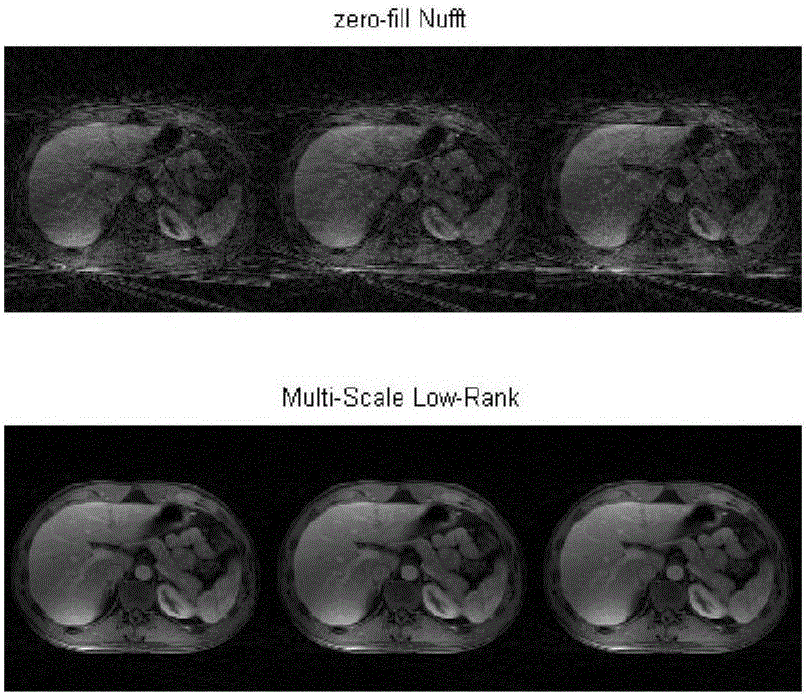Belly image reconstruction device
An image reconstruction, abdominal technology, applied in the field of image processing, can solve the problems of image loss and underutilization of data, etc.
- Summary
- Abstract
- Description
- Claims
- Application Information
AI Technical Summary
Problems solved by technology
Method used
Image
Examples
Embodiment 1
[0072] Embodiment 1, concrete processing steps are as follows:
[0073] 1. The data acquisition module, which collects data on the subject's liver, adopts Golden-Angle Radial subsampling magnetic resonance 3D sequences.
[0074] 2. The data dimensionality reduction module uses the Locally linear embedding (LLE) algorithm to reduce the K-space center data to a one-dimensional sequence.
[0075] 3. The image reconstruction module first divides the collected data into 3 categories according to the one-dimensional sequence and the size of the value. For each type of data, the multi-scale low-rank restoration theory is used to reconstruct, and three reconstructed images are obtained.
[0076] 4. The image registration module uses the Lucas-Kanade algorithm to register the three reconstructed images, that is, to register the last two images to the first image.
[0077] 5. The image output module averages the registered 3 images, and finally outputs 1 image.
[0078] Simulation re...
Embodiment 2
[0080] Embodiment 2, concrete processing steps are as follows:
[0081] 1. The data acquisition module, which collects data on the subject’s kidneys, adopts Golden-Angle Radial subsampling magnetic resonance 3D sequences.
[0082] 2. The data dimensionality reduction module uses the Locally linear embedding (LLE) algorithm to reduce the K-space center data to a one-dimensional sequence.
[0083] 3. The image reconstruction module first divides the collected data into 3 categories according to the one-dimensional sequence and the size of the value. For each type of data, the multi-scale low-rank restoration theory is used to reconstruct, and three reconstructed images are obtained.
[0084] 4. The image registration module uses the Lucas-Kanade algorithm to register the three reconstructed images, that is, to register the last two images to the first image.
[0085] 5. The image output module averages the registered 3 images, and finally outputs 1 image.
PUM
 Login to View More
Login to View More Abstract
Description
Claims
Application Information
 Login to View More
Login to View More - R&D
- Intellectual Property
- Life Sciences
- Materials
- Tech Scout
- Unparalleled Data Quality
- Higher Quality Content
- 60% Fewer Hallucinations
Browse by: Latest US Patents, China's latest patents, Technical Efficacy Thesaurus, Application Domain, Technology Topic, Popular Technical Reports.
© 2025 PatSnap. All rights reserved.Legal|Privacy policy|Modern Slavery Act Transparency Statement|Sitemap|About US| Contact US: help@patsnap.com



